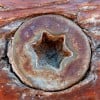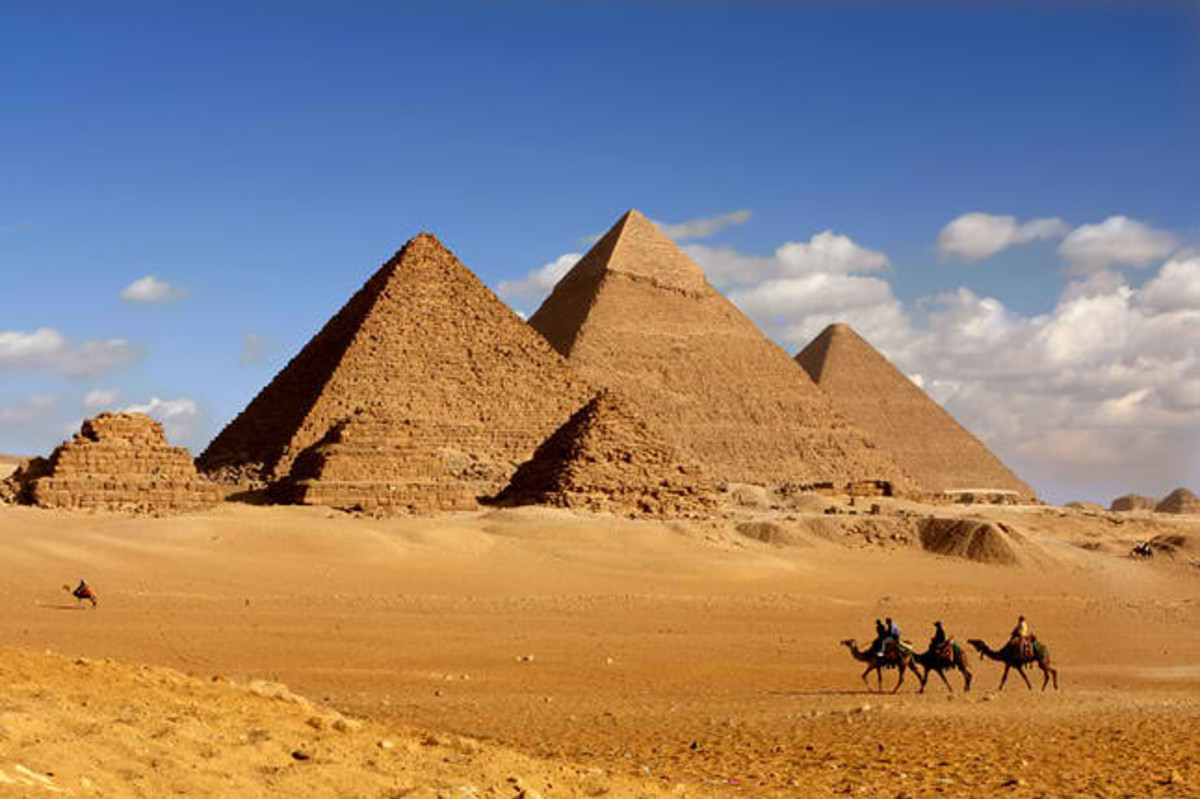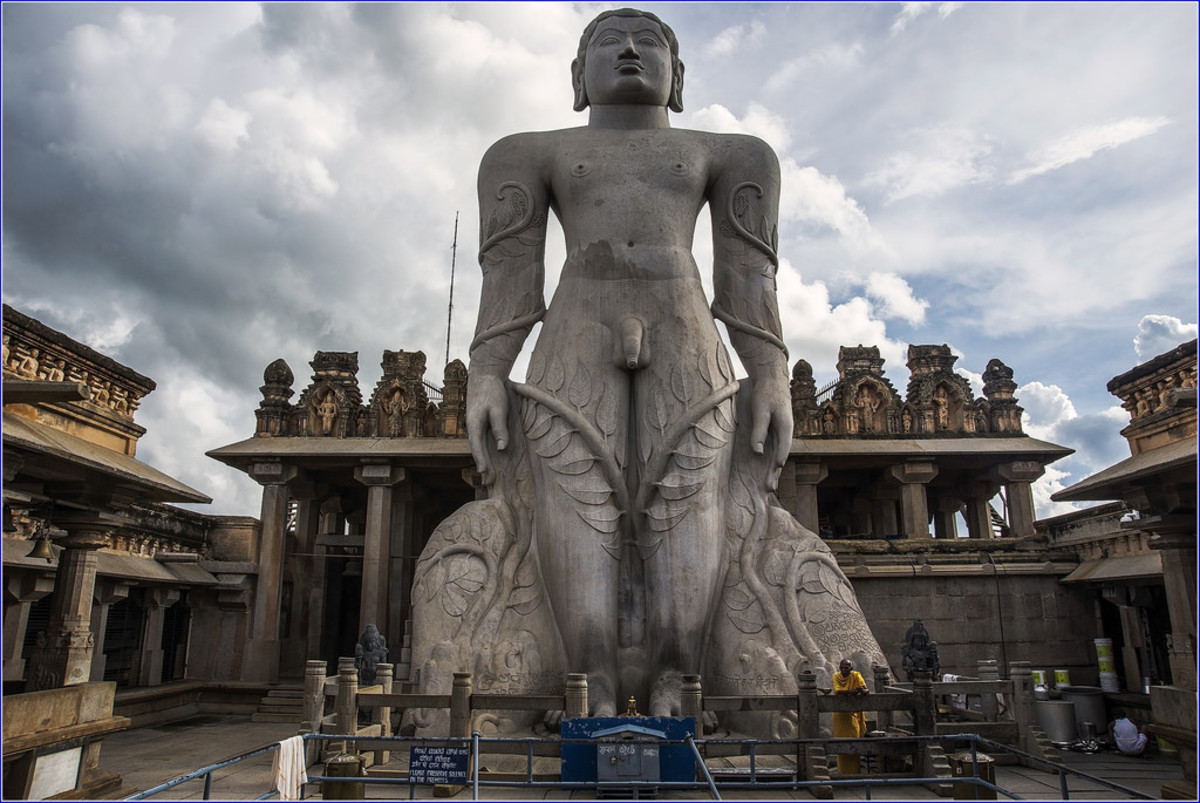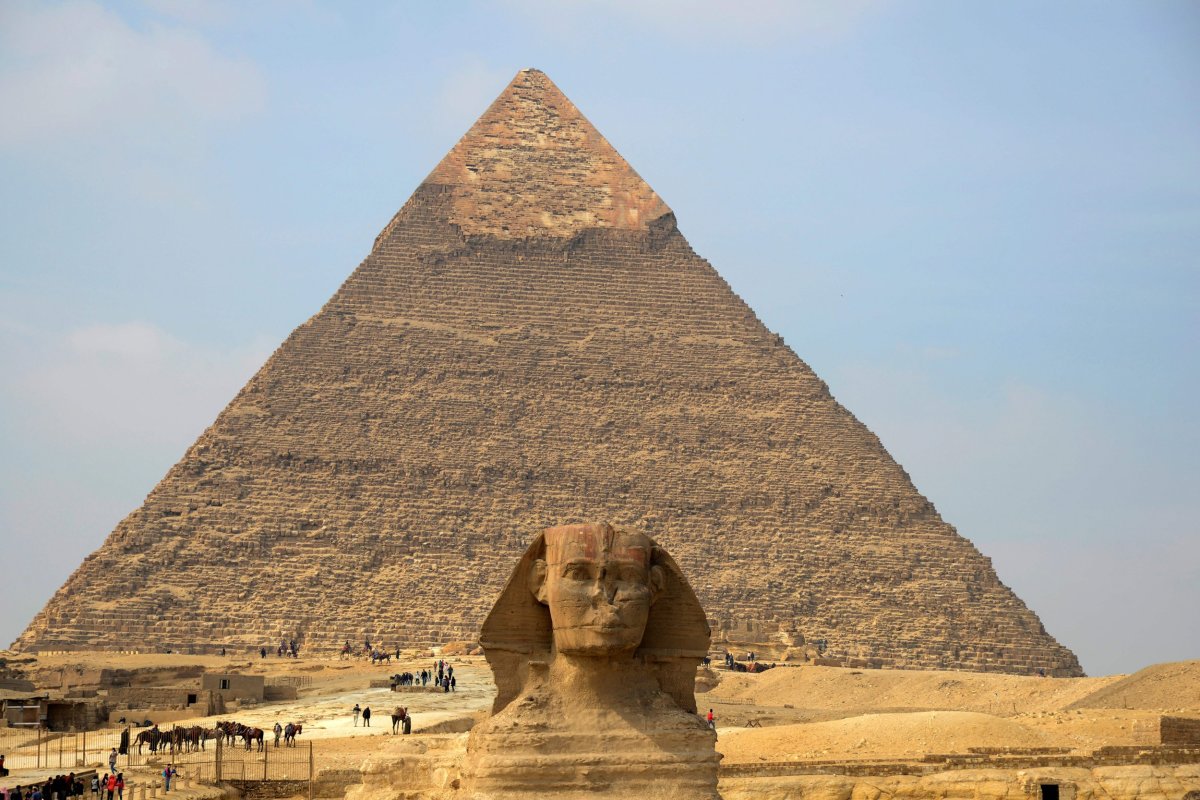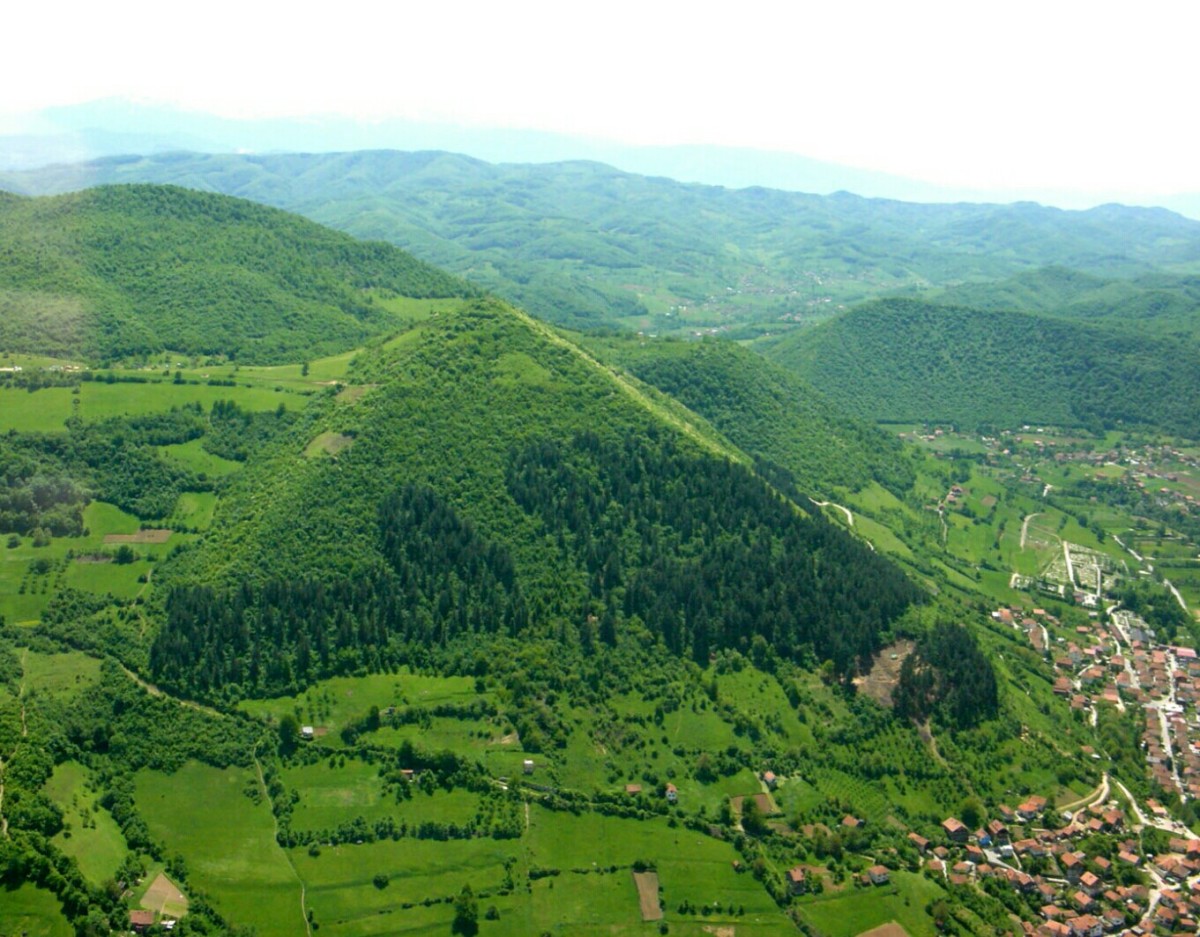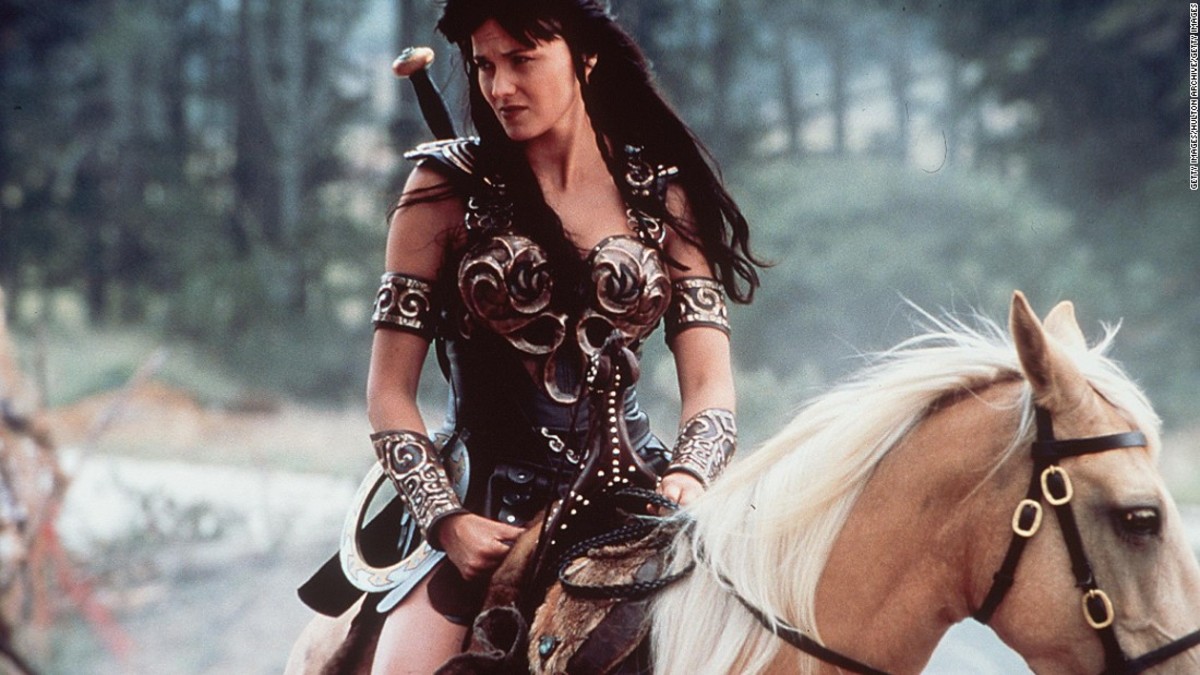- HubPages»
- Education and Science»
- History & Archaeology»
- Ancient History
All 7 Ancient Wonders of the World
Throughout mans history on earth there have been many fantastic structures that have been built for many different reasons. However, these 7 have stood the test of time and make up what we now know as the 7 ancient wonders of the world.
One of the oldest known records of these wonders comes to us from Herodotus, an ancient Greek historian from sometime around the 5th century BCE. He has been referred to as the ‘Father of History’ because he was the first person that we have substantial records of collecting and recording data systematically.
Along with Herodotus, the Antipater of Sidon also contributed greatly to the list. He was a Greek poet who lived around the second half of the 2nd century BCE. He composed a poem around 140 BCE that documents his ideas of the 7 wonders.
I have set eyes on the wall of lofty Babylon on which is a road for chariots, and the statue of Zeus by the Alpheus, and the hanging gardens, and the Colossus of the Sun, and the huge labour of the high pyramids, and the vast tomb of Mausolus; but when I saw the house of Artemis that mounted to the clouds, those other marvels lost their brilliancy, and I said, 'Lo, apart from Olympus, the Sun never looked on aught so grand.'
Antipater, Greek Anthology IX.58
The first one that he mentions are the walls at Babylon that never actually made it onto the list and was replaced with the Lighthouse at Alexandria.
The wonders fall into three distinct categories, Monuments to the Dead, Monuments to the Gods, and Functional Monuments. So with out further ado, let us dive in:
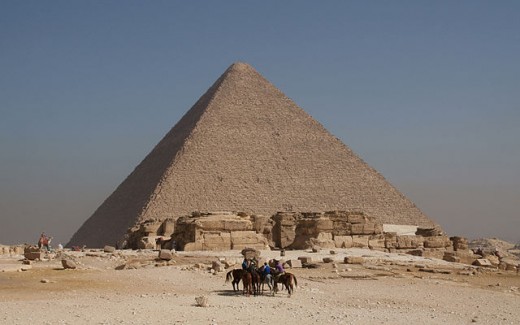
Monuments to the Dead
The Great Pyramid at Giza
The oldest and interestingly enough the only wonder still standing today is the Great Pyramid at Giza. Built somewhere around 2600-2500 BCE, it is the biggest of three pyramids built in the Giza Necropolis which borders what is now El Giza, Egypt. Scholars believe that the pyramid was built to be a tomb for the pharaoh Khufu and his wives.
The base of the pyramid is 756ft (230.4m) on each side and measures and astounding 481ft (146.5m) tall. What is absolutely astounding about this pyramid is that it is made up of an estimated 2.3 million stones each weighing up to 15 tons and some of the stones have been shown to be from quarries that are over 1,000 miles away!
Imagine that, I get tired of carrying two bags of groceries less than a half mile to my house and in a day before any kind of machinery at all, the Egyptians built this great pyramid in less than 30 years. Well, considering the society of the Egyptians back then, it was probably built by slaves but that doesn’t make it any less impressive.
Much of the pyramids outer casing has since been destroyed but all of the inside structure remains pretty much intact. Upon analysis of some of the remaining casing stones on the pyramids eastern side, scientists have deduced that the average gap between stones is less than 1/50th of an inch! That’s not even enough room to slip a knife blade between.
The Mausoleum at Halicarnassus
Originally built as a tomb for Mausolus, a king of the Persian Empire, it was constructed sometime between 350-310 BCE in Halicarnassus (modern day Bodrum, Turkey). Originating from the name of the king, a mausoleum is a word used to describe any large stately building, especially one that houses a tomb or tombs.
The building was 148ft (48m) tall when it was constructed and each of its four sides was adorned with statues done by four different Greek sculptors. Unfortunately Christians destroyed the tomb in the 16th century because it was seen as a symbol of pagan art. However, the Masonic lodge in Washington, DC was modeled after the tomb so we have a modern day example of what it would have looked like.
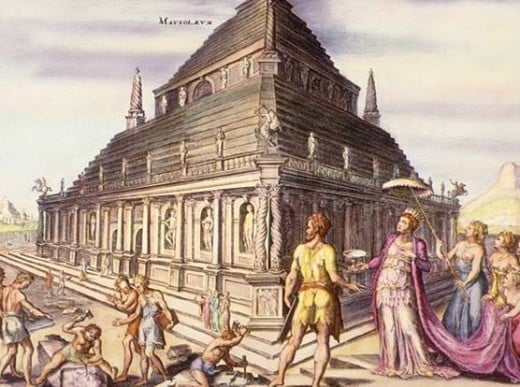
Monuments to the Gods
The Statue of Zeus at Olympia
Built in Olympia, Greece, the site of the first Olympic games, this statue stood 43ft (12m) tall and was erected circa 432 BCE. The statue was housed…where else but in the temple of Zeus (I mean is there any better place to put a statue of a man than in his own temple?)
This sculpture was created by a Greek artist named Phidias and was constructed out of gold plated bronze and ivory. In his right hand he held a figure of Nike, the goddess of victory, made from ivory and gold, and in his left hand, a scepter made with many kinds of metal, with an eagle perched on the top. His sandals were made of gold and so was his robe. His garments were carved with animals and with lilies. The throne was decorated with gold, precious stones, ebony, and ivory. According to records the statue was so large it appeared that if Zeus was to stand up “He would un-roof the temple”.
There are several theories to its demise including that it was burned up in 425 AD when the temple burned down but I don’t know if I buy that one. How does a temple made of marble and other rocks and metals burn down? Another theory is that it was taken to Constantinople and destroyed in the great fire of the Lauseion, in AD 475. Whatever happened, its long gone now.
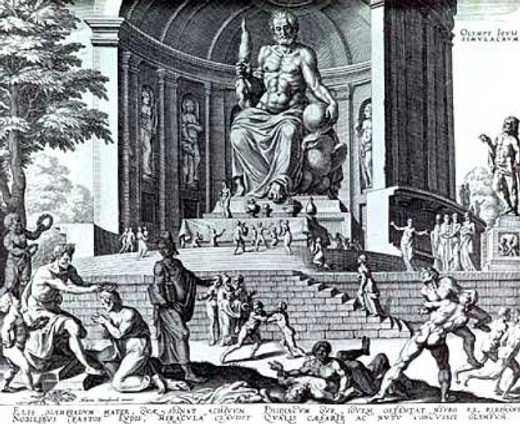
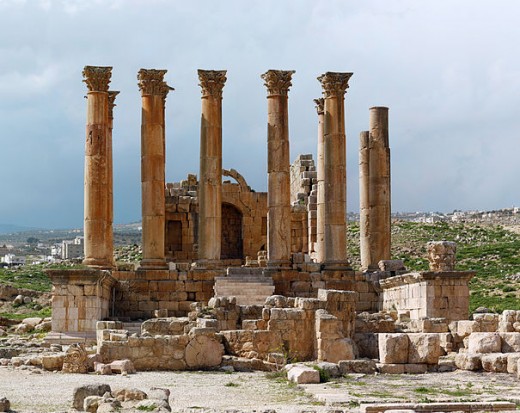
Temple of Artemis at Ephesus
Artemis is the Greek goddess of the hunt, fertility and the mistress of nature. As with all of the Greeks numerous gods and goddess's, artemis has a fascinating history. The stories of these gods also make great stories for children or serve as the beginnings of creative art projects!
Built to honor her, the temple was rebuilt three times between the 7th century BCE and its final destruction in 401 AD.
Inside the temple was a large, marble statue of Artemis depicted with many breasts covering her body and symbolizing her as the God of Fertility.
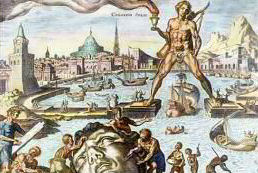
The Colossus of Rhodes
The Colossus of Rhodes was constructed by Chares of Lindos to commemorate the city of Rhodes victory over the ruler of Cyprus who unsuccessfully attempted to overtake the city in 305 BCE. Before its destruction by earthquake in 226 BCE, the statue stood over 107ft (30m) tall making it one of the tallest statues in the ancient world. The statue was said to span the harbor entrance so that ships would have to sail under it to get into the harbor.
The statue was modeled after the titan Helios, a representation of the sun god. After if fell over, Ptolemy III, the ruler of Egypt at the time, offered to pay to have it remade but the oracle of Delphi scared the people into thinking that they had offended the sun god and they declined it reconstruction. According to the records of Pliny the Elder, a Roman historian, author and naturalist; “Even the fallen pieces of the statue were so impressive that people traveled from all around to come see it. Few people were able to wrap their arms around the thumb”. The remains were allowed to lie on the ground for over 800 years.
Functional Monuments
The Hanging Gardens of Babylon
This is perhaps one of the most intriguing of the seven wonders because it is the only one who’s actual existence is speculated. It is possible that it is completely legendary and never really existed. Nevertheless, it has stood the test of time and is on the list of the 7 wonders.
Built by King Nebuchadnezzar II, the Neo-Babylonian king from 605-562 BCE, the gardens have been referenced in several ancient texts but no archaeological proof of their existence has been shown. The story goes that King Nebeuchadnezzar built the gardens for is wife was homesick and tired of the desert. She longed for her Amazonian homeland so he built her a garden palace. The palace was built out of the same stone as the surrounding landscape so when viewed from afar, it appeared that the plants were hanging suspended above the ground.
Estimates based on descriptions of the gardens predict that it would have needed in excess of 8200 gallons of water daily to keep it going. The palace used a system similar to the Archimedes screw to irrigate all of its plants. This is one of the earliest references to the Archimedes screw and its creation is often attributed to the hanging gardens.
- Archimedes Home Page
Both the Archimedes screw and the inventions namesake are both incredibly interesting topics and have influenced science and the world in gigantic ways. Check this out to learn all you'll ever want to know about Archimedes...and his screw!
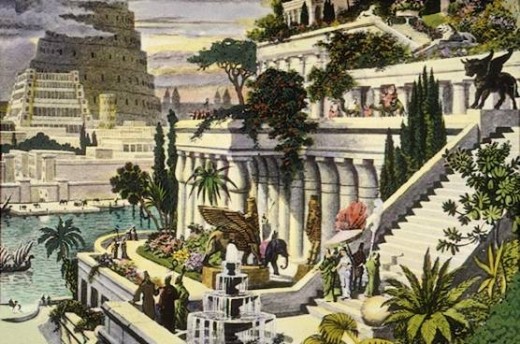
Photo Facts
Unfortunatley this engraving is quite popular on the internet, especially with those of us using free images, so you may have seen it already. However I will spice it up a little with an interesting fact. The tower that can be seen off in the distance on the left is supposed to be the Tower of Babel from the bible, Genesis 11. I think it adds a whole other level to the controversy over the reality of the gardens...
Lighthouse at Alexandria
The Lighthouse of Alexandria, also known as the Pharos of Alexandria, was a tower built between 280-247 BCE on the island of Pharos at Alexandria, Egypt. The island was supposedly inhabited by people that would destroy any ship that was wrecked off of its coast so to deter this problem, Ptolemy I had the lighthouse built. It was linked to the mainland by a man-made connection named the Heptastadion, which formed one side of the city's harbor. Its purpose was to guide sailors into the harbor at nighttime. With a height variously estimated at somewhere in-between 393 and 450 ft (120 and 140 m), it was for many centuries among the tallest man made structures on Earth.
It is cool to note that in lieu of an electric light at the top, there was only a huge fire burning all the time!
